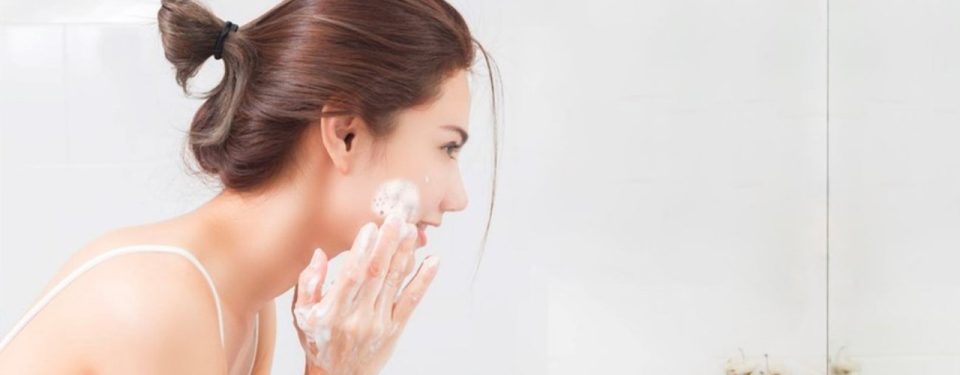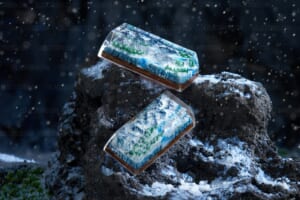They move the facial skin in multiple directions to produce a wide range of movement patterns that enable nonverbal communication, eye closure, and oral motor functions.
Eyelid and Midcheek Anatomy
Paul A. Harris, Bryan C. Mendelson, in Putterman’s Cosmetic Oculoplastic Surgery (Fourth Edition), 2008
Skin
Facial skin thickness varies between areas and individuals, and undergoes a universal age-related thinning of the dermis. Subcutaneous fat exists throughout the facial skin with connective tissue septa dividing the fat into lobules. The skin and subcutaneous tissue of the face can be divided into aesthetic units, each unit characterized by the skin having a similar color, texture, thickness and mobility. This visual separation becomes more apparent with advancing age. Aesthetic units have an important clinical application to consider in skin resurfacing procedures as well as in surgery. Incisions placed at the boundaries of these units result in less obvious scarring.
Complications of Facelifts and Ancillary Facial Cosmetic Procedures
Jeffrey S. Moyer, in Complications in Dermatologic Surgery, 2008
Etiologic factors
Necrosis of facial skin after rhytidectomy is usually a result of large hematomas that have not been expeditiously drained (Fig. 19.5). Necrosis occurs with an incidence ranging from 1.1–3.0%.23 Large hematomas can cause vascular congestion and arterial compromise to the skin, resulting in ischemia and cell
Major Points
- Tobacco use and unrecognized hematoma are the two most common reasons for skin flap necrosis.
- Prevention is best achieved by avoiding surgery in high-risk patients (i.e. smokers).
- Full-thickness tissue loss will result in scarring.
Management is typically watchful waiting along with the judicious use of local steroid injections for hypertrophic scarring.
death. Tobacco use and systemic illnesses such as Raynaud’s disease42 also predispose the patient to necrosis after rhytidectomy. Technical errors such as injury to the subdermal plexus during flap elevation, excessive wound-closure tension or CO2 laser treatment of undermined skin can also result in skin necrosis.
Layered Closures, Complex Closures with Suspension Sutures and Plication of SMAS
Edgar F Fincher MD PhD, … Ronald L Moy MD, in Surgery of the Skin, 2005
Summary box
- Facial skin is divided into discrete cosmetic subunits whose aesthetic characteristics are derived from regional variations in the composition of the underlying tissue layers. Careful attention to restoring these subunits during reconstruction is critical.
- The human face is composed of an interrelated functional unit of muscle, connective tissue, and overlying skin that should be treated as a single unit to obtain optimal results.
- Layered closure is crucial in optimizing the ultimate outcome of cutaneous reconstruction. Careful re-approximation of the individual tissue layers to restore the disrupted integrity of skin must be obtained.
- Human skin has both viscoelastic and anisotropic characteristics. Understanding these tissue properties and their effects during flap manipulation and skin closure are fundamental principles of cutaneous surgery.
- Suspension sutures are effective in stabilizing the skin against the opposing vector forces of the elastic dermis and the forces of gravity, and are used in both reconstructive and cosmetic surgery.
- Performing complex closures often requires the use of a combination of techniques (flaps, grafts and primary closure) to obtain optimal results.
Surgical Management of Craniofacial, Nasoethmoidal, and Grossly Comminuted Midface Fractures
Ashraf Messiha, … Helen Witherow, in Maxillofacial Surgery (Third Edition), 2017
Reattachment of the Facial Soft Tissues
The dermis of facial skin is attached to either the periosteum or the deep fascia through a system of ligaments in the medial midface and lower face.120 Other superior attachments around the orbit and temporal regions are not true ligament but fibrous septa and adhesions. Following the extensive subperiosteal stripping of the facial soft tissues, particularly in the periorbital region, there is a tendency for these tissues to sag under their own weight. This can result in the inferior displacement or ptosis of the malar cheek pad with the loss of the prominence of the soft tissues over the body of the zygoma. The weight of the unsupported soft tissues may also predispose to ectropion of the lower lid and increased scleral show. Careful attention should be directed to the approximation of the orbital periosteum during closure. The lateral canthal ligament, which is identified by traction with a pair of small-toothed forceps, is reattached to a hole drilled just below the frontozygomatic suture with a 2/0 braided Dexon suture. The malar fat pad, again identified with toothed forceps, is reattached to the inferolateral orbital rim with a suture such as 2/0 braided Dexon. It may be attached to a drill hole at this site or to a bone plate, which is often required either at the inferior orbital rim or at the lateral orbit.110,121
Inflammatory vascular diseases
Dirk M. Elston MD, in Dermatopathology, 2009
Granuloma faciale
Key features
- Typically facial skin (sebaceous follicles, Demodex mites)
- Grenz zone
- Leukocytoclastic vasculitis with eosinophils
- Onion skin fibrosis in chronic cases
- “Granuloma” in the name only – not on the slide
Granuloma faciale presents clinically as reddish-brown macules or plaques with patulous follicular openings. Histologically, it is a chronic leukocytoclastic vasculitis with eosinophils. Over time, onion skin fibrosis develops around vessels. A grenz (border) zone commonly separates the infiltrate from the adjacent follicular epithelium. Despite the name, there are no granulomas in the tissue.
PEARL
Question: Where is the granuloma in granuloma faciale? Answer: In the name. (Not in the skin.)
Pathological Perspectives of Nonmalignant Lesions of the Mouth
Gernot Jundt, Daniel Baumhoer, in Maxillofacial Surgery (Third Edition), 2017
Palisaded Encapsulated Neuroma (Solitary)
Usually occurring on the facial skin of middle-aged adults, the palisaded encapsulated neuroma (solitary circumscribed neuroma) is also found in the oral cavity as a single dome-shaped nodule. Most commonly, the lesion is situated in the masticatory mucosa, especially the hard palate, and the lips. Affected patients do not suffer from neurofibromatosis or multiple endocrine neoplasia. Microscopically, these well-circumscribed and lobulated tumors show interlacing bundles of spindle cells, Schwann cells and perineural fibroblasts, with wavy nuclei but without atypia. Sometimes a plexiform growth pattern is present. With special stains or by immunohistochemistry and in contrast to schwannomas or neurofibromas, axons can be demonstrated throughout the lesion.
Patient Examination and Assessment
Subir Banerji, Shamir Mehta, in Principles and Practice of Esthetic Dentistry, 2015
Facial skin
An assessment of the facial skin should be carried out on a routine basis, in particular when facial esthetic treatments may be indicated. Skin types may be classified according to pigmentation, tendency to burn, and likelihood of reaction to treatment, in particular heat-based treatments such as lasers. The Fitzpatrick skin phototype classification21 provides a particularly useful way of looking at skin types to assist with treatment planning, where certain skin types, such as those of the thin, transparent variety (category 1), are less suited to dermal filler therapies. In such situations, there is a risk of developing a green/yellow discoloration if fillers are injected superficially.
The presence and distribution of skin wrinkles may also be noted, both at rest and during dynamic movements. The Glogau index22 can provide a particularly useful tool for categorizing skin wrinkles and for quantifying improvement following treatment. This index also provides a platform for planning future re-treatments.
Inflammatory vascular diseases
Dirk M. Elston, in Dermatopathology (Second Edition), 2014
Erythema elevatum diutinum
Key features
- Not facial skin
- LCV ± eosinophils
- Onion-skin fibrosis
Erythema elevatum diutinum (EED) presents with red to orange plaques on extensor surfaces. Like granuloma faciale, EED represents a chronic fibrosing form of leukocytoclastic vasculitis. It is distinguished histologically by a non-facial location and greater fibrosis. EED has been associated with chronic streptococcal infection, HIV infection, and IgA gammopathy. The histologic changes are similar to those of granuloma faciale, but the surrounding skin has features of acral skin. Extracellular cholesterol clefts deposit in some chronic cases as a result of years of erythrocyte extravasation.
Neck Dissection
Ludi E. Smeele, in Maxillofacial Surgery (Third Edition), 2017
Regional Tumor Spread
It is a well-known fact that malignant tumors may extend to regional lymph nodes. Due to the anatomical complexity of the head and neck, as well as the great variety in types of cancers, there is no overall approach that describes this process in detail. Taken from the point of view of the primary tumor, the following general remarks may be made.
Melanoma and Non-Melanoma Skin Cancers
Tumors that originate in the facial skin anteriorly to a line drawn between the vertex and the helix tend to spread to the parotid, buccal, and nasolabial lymph nodes. Tumors that originate posterior to this line tend to spread to retroauricular, nuchal, and trapezium nodes.
Nasopharynx
Undifferentiated carcinoma and squamous cell carcinoma predominantly spread to retropharyngeal and posterior triangle neck nodes.
Nasal Cavity and Paranasal Sinuses
Tumors that originate in this area spread to level Ib, II, and retropharyngeal nodes.
Lip and Oral Cavity
Carcinomas from these areas spread to submental and submandibular nodes and subsequently along the jugular chain.
Oropharynx
Carcinomas from the oropharynx tend to spread to level II and further down along the jugular chain and to retropharyngeal nodes.
Larynx and Hypopharynx
These carcinomas spread to levels III and IV and central compartment (level VI).
Salivary Glands
Salivary gland carcinomas from the minor salivary glands follow the pattern of spread of the area they originate in. Submandibular and sublingual gland tumors follow the pattern of spread of oral cancers. Parotid tumors spread to intraparotid nodes and to level II first, and then along the jugular chain.
Thyroid
Thyroid cancers tend to spread to the central compartment and to the lower neck, levels IV and Vb, and the superior mediastinum.
Facelift
Bryan Mendelson, Rostam D. Farhadieh, in Plastic Surgery – Principles and Practice, 2022
Nerve Injury
The sensory innervation of the facial skin flap is always damaged from subcutaneous dissection, the extent of numbness being in proportion to the extent of dissection. This usually resolves in 15–18 months. The great auricular nerve branches are at risk during the neck dissection where they are superficial above McKinney’s point, 6.5 cm below the external auditory canal.
All facial motor nerve branches are considered at risk during facelifts. Traction neurapraxia is the most frequent injury leading to temporary muscle paresis that resolves with time. A major neurapraxia may be evident for 12–16 weeks. The buccal branch is thought to be the most commonly affected, but fortunately, owing to having multiple interconnecting branches with intraneural overlap, clinical significance is diminished. Frontal and marginal mandibular branch injuries are more clinically significant as these are terminal branches. Permanent facial nerve injury is a major complication and fortunately rare, being reported in several large series with a range of 0–0.3%. Most nerve injuries recover during the postoperative months












